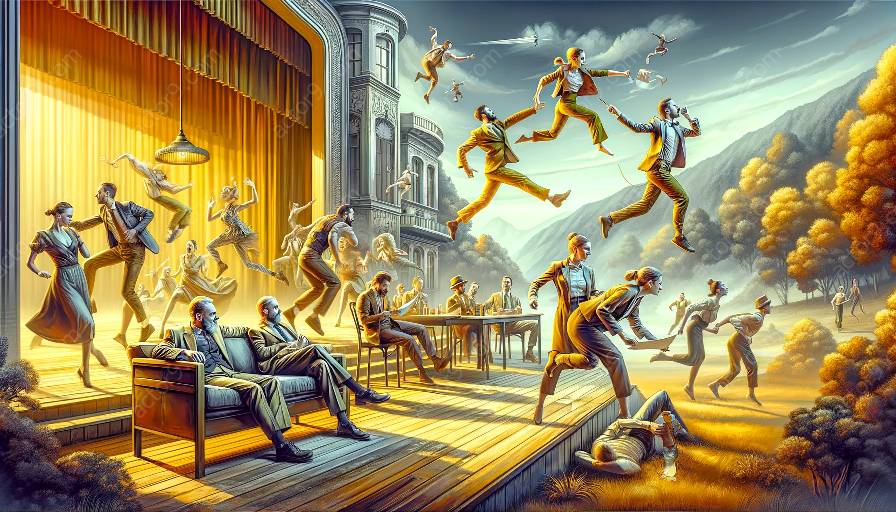The origins of physical comedy in theatre trace back to ancient civilizations and have evolved into a distinctive art form that combines physicality and humor. This article delves into the historical roots, comedic aspects, and cultural impact of physical theatre, highlighting its influence on comedy and entertainment.
Historical Origins
Physical comedy has roots in the ancient Greek and Roman theatrical traditions, where exaggerated gestures, acrobatics, and slapstick humor were prominent elements of entertainment. Commedia dell'arte in Renaissance Italy further popularized physical comedy with its improvised performances and exaggerated characterizations.
Evolution in Theatre
During the 19th and 20th centuries, physical comedy continued to evolve, incorporating elements of vaudeville, clowning, and circus performance. The advent of silent films provided a platform for physical comedians such as Charlie Chaplin and Buster Keaton to showcase their comedic prowess through non-verbal expression and visual gags.
Comedic Aspects of Physical Theatre
Physical theatre blends humor with movement, using exaggerated gestures, mime, and expressive body language to evoke laughter and emotion. The use of pratfalls, slapstick, and physical mishaps adds a humorous dimension to storytelling, engaging audiences through visual and kinetic comedy.
Cultural Impact
Physical comedy in theatre has had a profound impact on popular culture, influencing comedic genres in film, television, and live performances. The integration of physicality and humor has transcended linguistic barriers, making physical theatre a universal form of entertainment that resonates with diverse audiences.
Contribution to Comedy
Physical comedy continues to inspire contemporary comedic performers and artists, shaping the comedic landscape with its emphasis on physical expression and comedic timing. The intersection of physical theatre and comedy has led to innovative forms of entertainment and storytelling, enriching the comedic repertoire with a unique blend of physicality and humor.
Conclusion
Exploring the origins of physical comedy in theatre provides valuable insights into its rich history, comedic aspects, and cultural significance. As a dynamic art form, physical theatre continues to captivate audiences with its ability to elicit laughter and convey powerful narratives through the art of physicality and comedy.




































